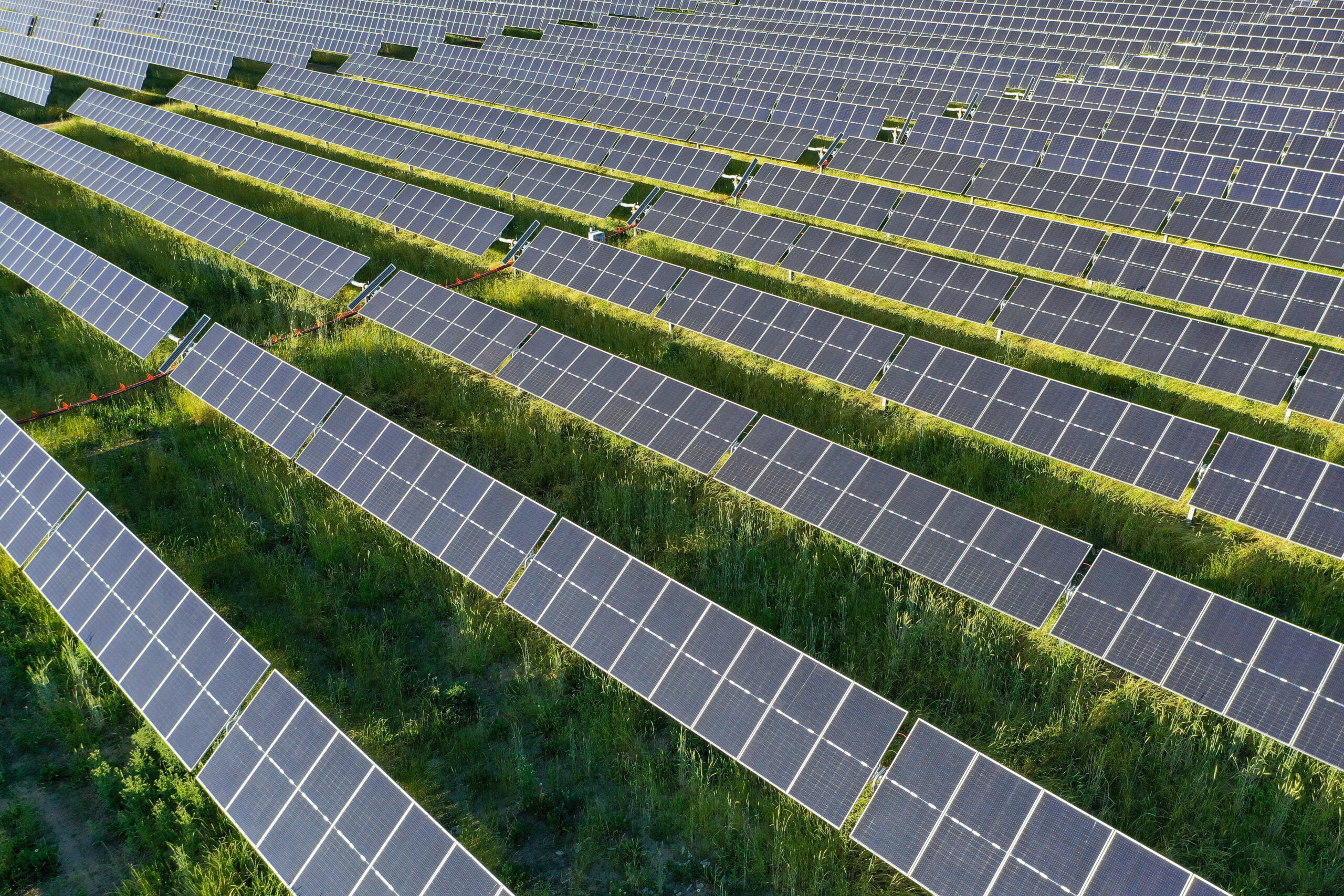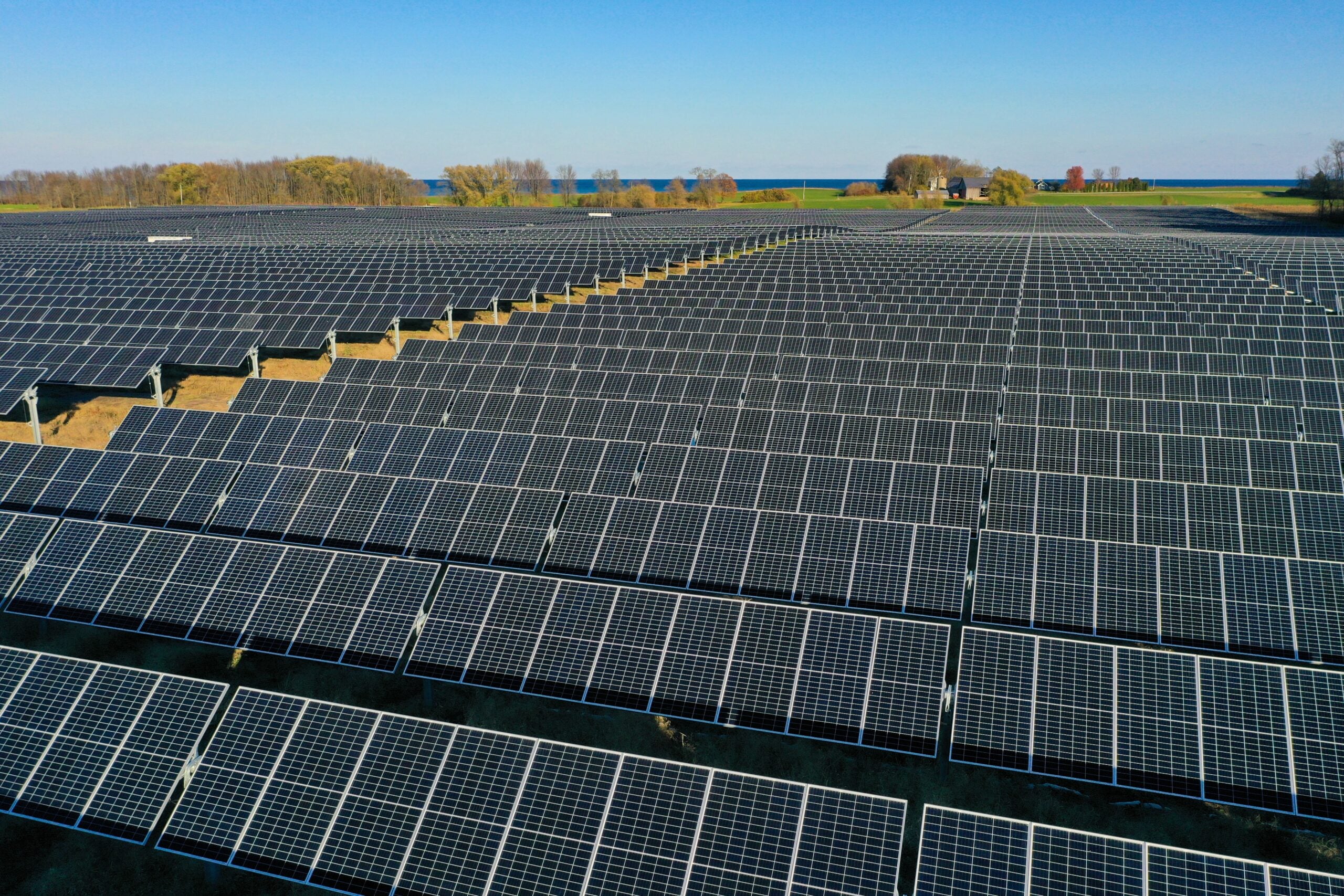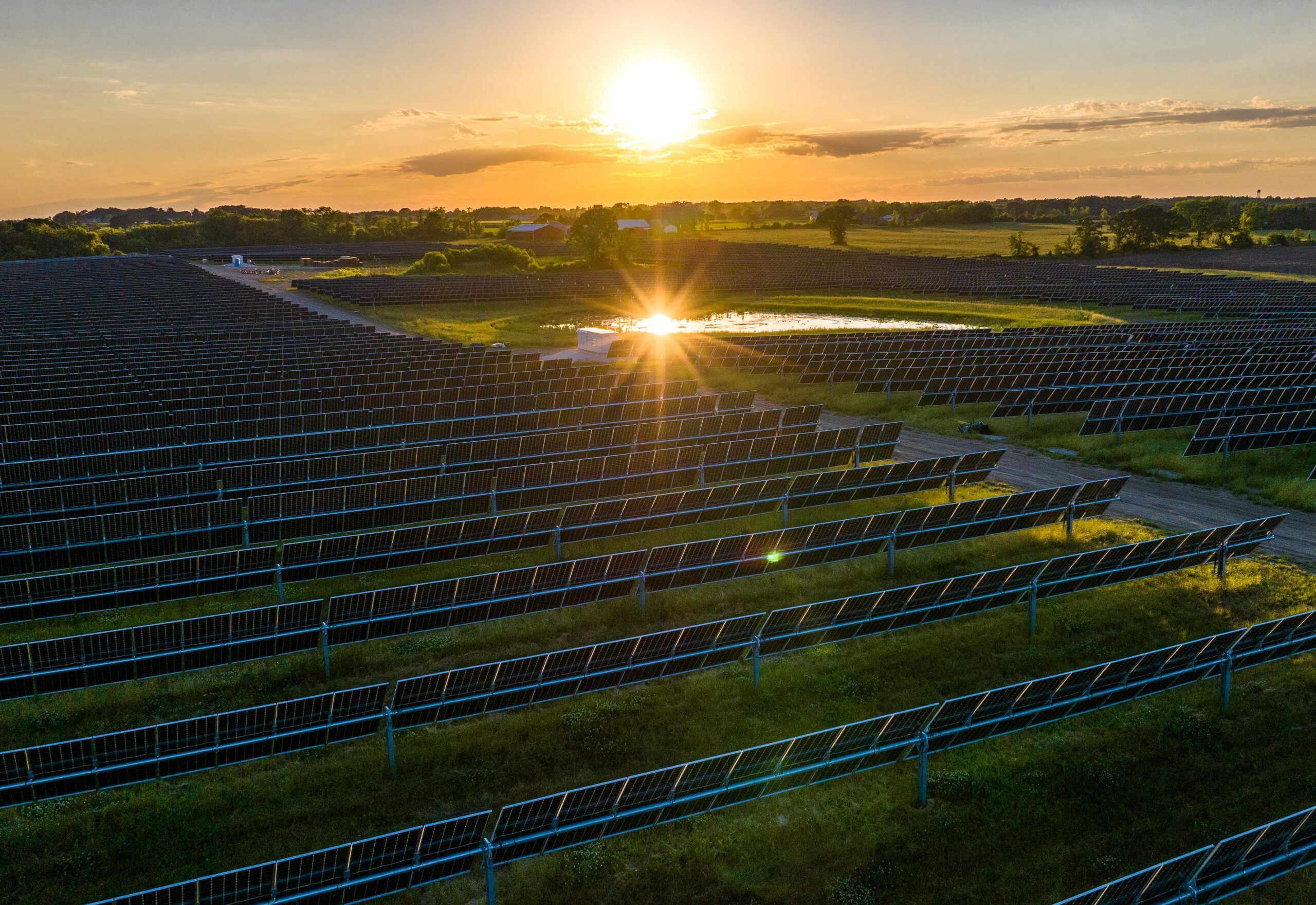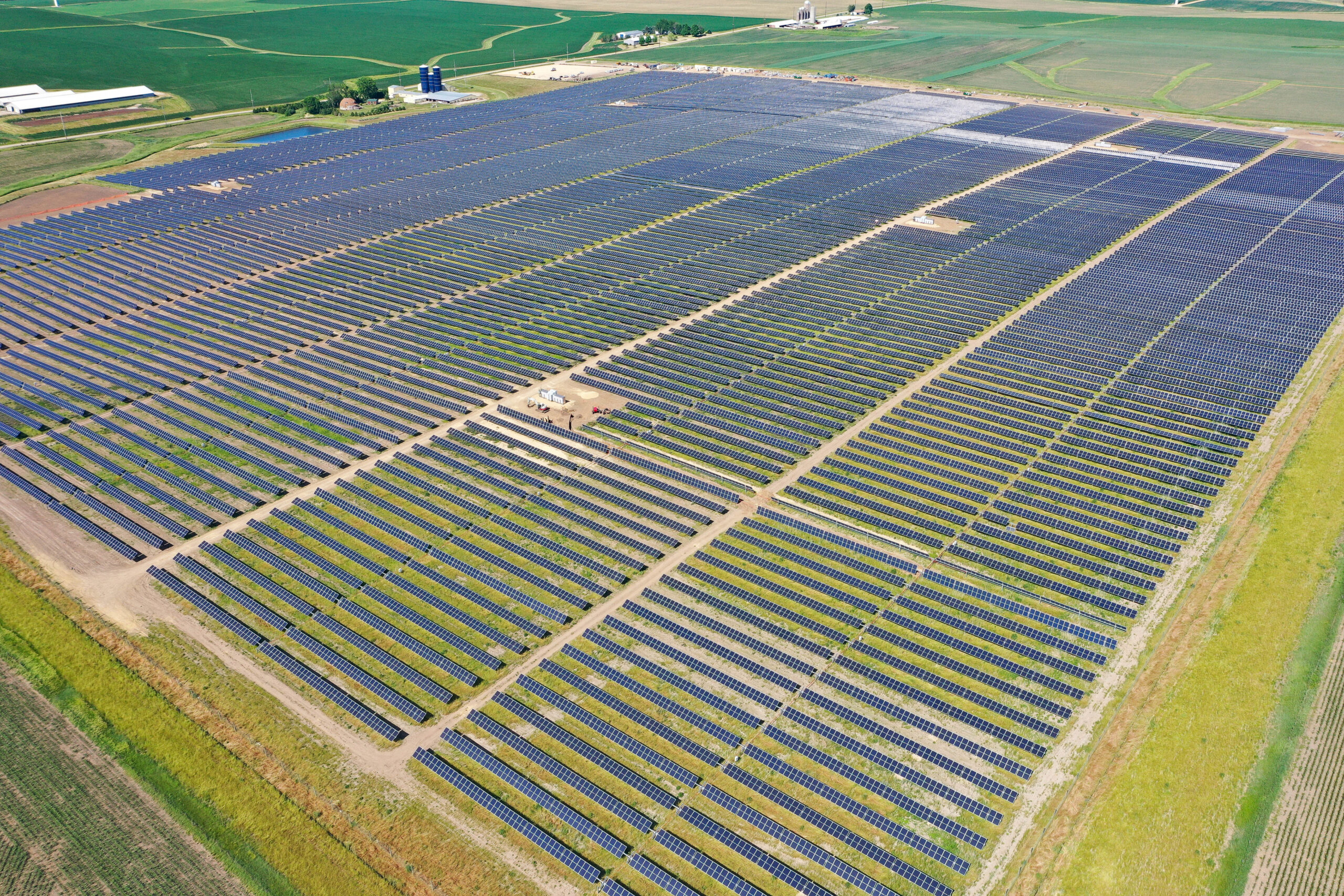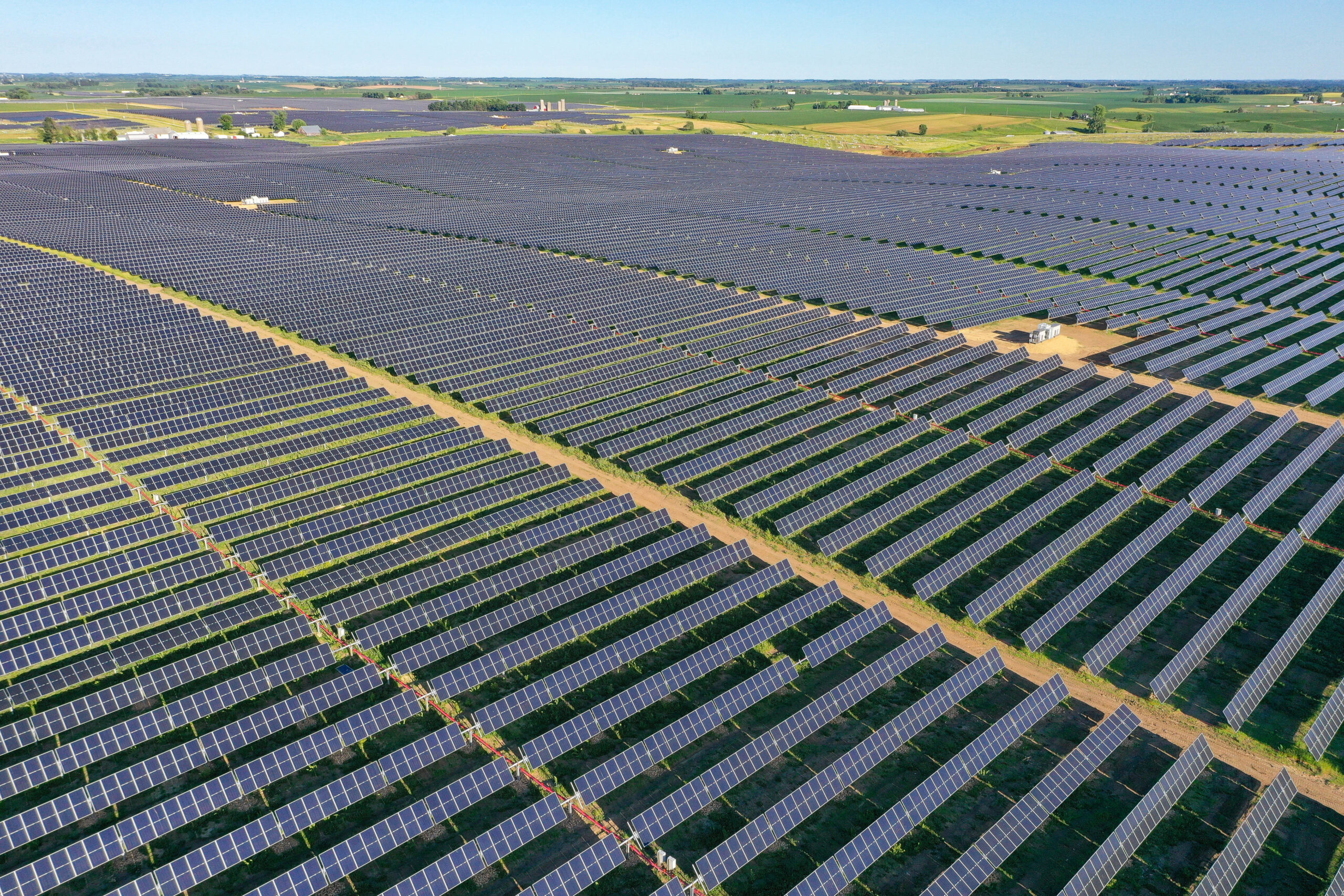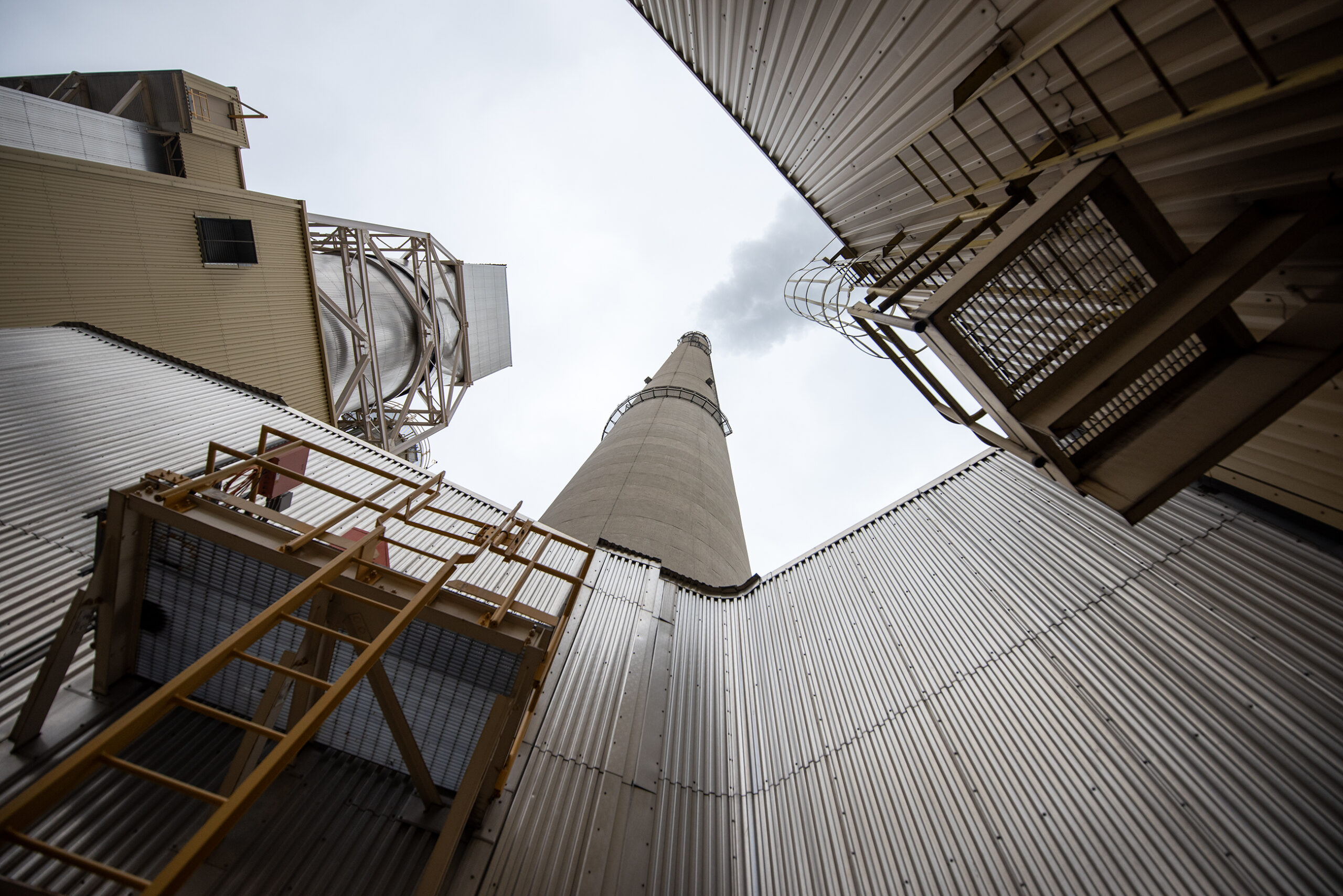Wisconsin could save lives and realize billions of dollars in economic growth and avoided health care costs as part of a shift to a clean energy economy over the next three decades, according to a new study.
Even so, the shift from fossil fuels to renewable energy development faces numerous barriers, including upfront costs, supply chain constraints, and Wisconsin’s political landscape.
The study commissioned by Clean Wisconsin and RENEW Wisconsin finds that Wisconsin can make a cost-effective transition to 100 percent carbon-free electricity or net-zero emissions across the state’s economy. The study and another companion report were conducted prior to the passage of the Inflation Reduction Act, which includes around $370 billion to speed up the clean energy transition.
Stay informed on the latest news
Sign up for WPR’s email newsletter.
Key findings indicate the state could add around $16 billion to Wisconsin’s economy, save $2 billion-$4.4 billion in health care costs in 2050, and create 68,000 more jobs. The state could also save up to 63 lives per million residents.
“It’s not going to be easy,” said Andrew Kell, policy analyst for RENEW Wisconsin. “There’s going to be a lot of planning, as well as policy actions that will need to take place between now and then in order to make that happen.”
Kell said that includes changes to consumer behavior and planning by utilities and businesses for significant infrastructure investments to shift to electric vehicles and electrify heating and appliances within buildings.
Scientists have called for “immediate and deep” cuts to carbon emissions to limit warming to 1.5 degrees Celsius or roughly 3 degrees Fahrenheit as set out under the Paris Climate Agreement. That’s a threshold that aims to ward off the worst effects of climate change even as climate experts anticipate the world will exceed that level of warming.
The report examined six clean energy scenarios against a baseline of business as usual. It states the most cost-effective way to cut emissions statewide is to pursue net-zero emissions economy-wide, including carbon-free electricity. The net-zero scenario is in line with scientists’ recommendations to cut greenhouse gas emissions 40 percent from 2005 levels by the end of the decade, and it would speed up retirement of coal plants by 2030. Wisconsin’s largest investor-owned utilities have pledged to exit coal by 2035.
The study notes getting there requires more ambitious investments across every sector. Kell said a net-zero economy would require $100 billion of investments from utilities, businesses and consumers through 2050.
“But along the way, while we’re making these investments, the costs of fossil fuels that we currently pay for will be avoided,” said Kell, noting those energy costs would be offset through savings on fuel and health care expenses.
More people are buying electric vehicles, and they’re expected to save customers thousands over time compared to most cars on the road. Even so, a Consumer Reports survey of roughly 8,000 adults this year found the cost of buying and maintaining an electric car was a barrier for more than half those surveyed. Kell noted federal incentives help reduce those costs, which are declining over time as demand grows.
If Wisconsin rapidly cuts emissions across all sectors, the report finds the state would see four times the emission reductions for only marginally higher costs in 2050 by targeting net-zero emissions than solely clean electricity. With less pollution, the study shows the state will save billions in avoided health care costs, growing the state’s gross domestic product by 3 percent.
Undoubtedly, the shift will require trade-offs for the state to reach a net-zero economy, said Chelsea Chandler, climate, energy and air program director for Clean Wisconsin. She noted many communities are already suffering from the effects of climate change or pollution stemming from fossil fuels.
“And they are overwhelmingly folks that are lower income and people of color that are located closer to some of our polluting industries and our power plants, and they are breathing that dirty air and having worse health outcomes … and that’s really inequitable,” Chandler said.
According to a companion study by Cambridge Econometrics, decarbonizing the state’s economy would create jobs for all skill levels and lead to a more inclusive economy. Highly populated urban areas like Green Bay, Milwaukee and south central Wisconsin would see the most jobs, of which roughly half would be in the electric, construction and manufacturing sectors.
The shift is anticipated to grow electric demand by 3.5 percent each year through 2050. To meet the demand for energy, the state would need to develop 31 gigawatts of solar power compared to roughly 2.5 gigawatts of utility-scale projects that have been proposed or approved to date. As Wisconsin utilities seek to ramp up solar projects, they’ve faced delays with construction due to challenges with a supply chain that is largely reliant on equipment from China.
Amid those constraints, Chandler said the scale of such development is equivalent to building around 100 solar plants like the Koshkonong Solar Energy Center, the state’s largest solar project approved to date. The project is currently facing a legal challenge from nearby landowners.
Gary Radloff, an energy policy consultant, said supply chain issues and local land use questions are among the barriers that can slow the pace of the transition.
“Communities maybe don’t want a large wind or solar farm in their backyard,” Radloff said. “I think, in general, we still have some issues with the political environment specific to the Wisconsin Legislature on how fast we move towards that or how much we invest in that.”
Democratic Gov. Tony Evers released the state’s Clean Energy Plan earlier this year, and Republican lawmakers have also introduced bills to remove barriers to solar development and invest in electric vehicle charging infrastructure. Even so, the state Legislature hasn’t acted on many climate and clean energy proposals. Assembly Speaker Robin Vos, R-Rochester, said a package of nearly two dozen bills put forth by Democrats last year was “pandering to the very liberal base.”
In June, Democrats announced plans to bring back a climate and jobs package in January of next year that would include targets to cut greenhouse gas emissions and a program for green job training. Senate Majority Leader Devin LeMahieu, R-Oostburg, accused Democrats of moving forward with a “‘Green New Deal’ disaster” that would hurt families struggling financially amid rising gas prices.
The report recommends lawmakers take steps like setting emissions targets and allowing third-party financing of solar projects — policies that the Legislature has yet to enact.
Radloff added the state should invest in other ways to encourage people to install rooftop solar beyond utility-scale investment, whether that’s through tax breaks or low-interest loans.
“I’m not saying that means we don’t do the things that the report advocates, and that we don’t build larger renewable energy power sources. We need both,” Radloff said.
The study includes development of rooftop solar under all scenarios. Under the net-zero scenario, the shift would also require investments in wind, storage, hydrogen and other sources. Gas would still be used as a backup source under a net-zero economy, but it would come from waste gas through sources like livestock manure.
The transition would also require robust expansion of interstate transmission lines like the roughly $500 million Cardinal-Hickory Creek transmission line. The project being built in southern Wisconsin is also facing multiple legal challenges from land conservation and wildlife groups. Without new lines, the state would need to add 36 percent more renewable resources, and the cost of reaching net-zero emissions would grow by $1 billion more per year in 2050.
Altogether, the study found delaying action would cost around $21 billion more from present costs over the next 28 years.
“We can get there,” Chandler said. “We just need to ramp up our action now.”
Wisconsin Public Radio, © Copyright 2025, Board of Regents of the University of Wisconsin System and Wisconsin Educational Communications Board.
